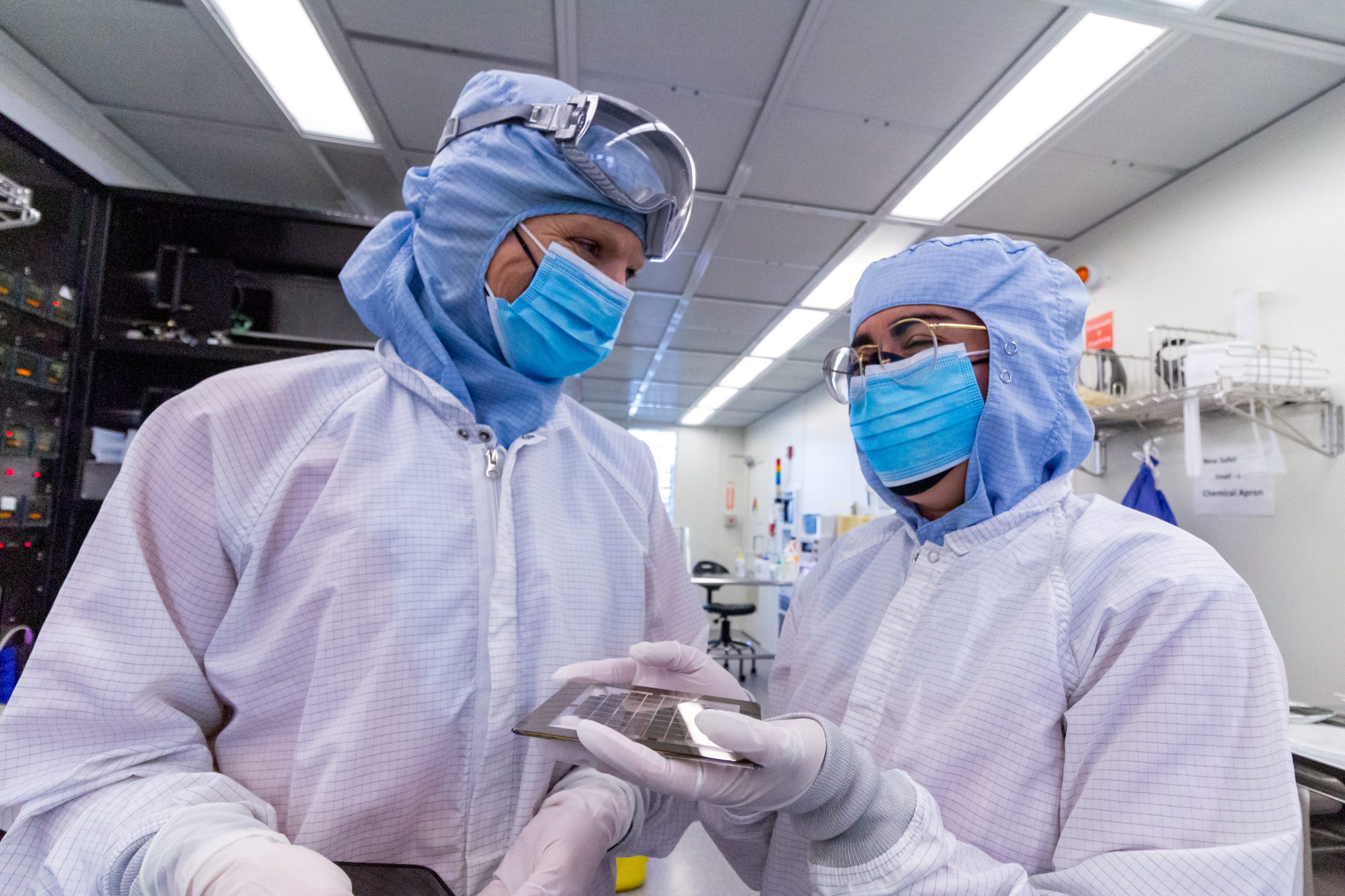Ohio State launches CAFE program for semiconductor research, collaborating with Intel and other Ohio universities


Yessica Jiminez takes part in materials engineering research in the materials institute facilities as an undergraduate student. Courtesy of Mike Huson
Amidst the construction of two new Intel computer chip factories in Ohio, the Institute for Materials Research at Ohio State is developing CAFE — the Center for Advanced Semiconductor Fabrication Research and Education — as a multi-institutional research program for the advancement of research in making semiconductors.
According to a Sept. 9 news release, the center will provide experience for graduate and undergraduate students by creating a “sustained, highly skilled and diverse semiconductor manufacturing workforce” and paving a path for leading-edge device technology through research.
According to the Semiconductor Industry Association, semiconductors are microchips that are “the brains of modern electronics,” helping power smartphones, TVs, computers, medical equipment and more.
Vice President in the Office of Research and IMR Director of Innovation Jay Sayre said negotiations between Intel and the university have occurred between teams of three people from each institute.
“Intel is a very integrated ecosystem, and the interests of Intel and the interests and capabilities of the university align,” Sayre said.
Intel pledged $3 million over three years to fund CAFE, according to the news release.
Mike Huson, IMR communications coordinator, said the two new Intel computer chip factories will provide new internship opportunities for Ohio State students. As new facilities start up, students will have the ability to apply for these opportunities and work in Intel fabrication labs.
“In my mind, if I’m a student, and I’m interested in Intel, this is an immediate pathway for me to be involved with CAFE,” Huson said. “It would give me an opportunity to work in that lab, whether or not I was bachelor’s, master’s, Ph.D. Doesn’t matter, they have needs for all those.”
Sayre said opportunities for students beyond paid internships include graduate research associateships and undergraduate research experiences at Intel facilities in Ohio, Oregon and Arizona. The internships are available in all three facilities. The positions are open to all university students and will allow both graduates and undergraduates to collaborate in their research, he said.
Sayre said students will gain an understanding of the technology industry to inform their laboratory work.
“The students have the opportunity to understand how this research could get implemented and come back and actually do that research in a lab with that kind of industry-informed perspective,” Sayre said.
Sayre said the CAFE program will incorporate Ohio State’s research with nine other public universities in Ohio, led by Ohio State in close collaboration with the University of Cincinnati and Ohio University. The CAFE program will provide opportunities and funding to Central State and Wilberforce universities.
Sayre said this collaboration between universities is important to continuously evolve the technology industry.
“That type of interchange in communication will be critical to ensure that we are always relevant, always changing, always at the cutting edge as we move this forward,” Sayre said.
Sayre said CAFE also extends to the existing Ohio 5-OSU Summer Undergraduate Research Experience program — which allows students from Denison University, Kenyon College, Oberlin College, Ohio Wesleyan University and the College of Wooster to visit and work in Ohio State laboratories.
Sayre said Ohio State faculty, who have worked for Intel or within the semiconductor industry, will guide the training to CAFE students; they will learn how to operate laboratory cleanrooms and create devices within the facilities of Ohio State’s Nanotech West Laboratory, which contains the largest cleanroom facility in the state.
Huson said through the semiconductor fabrication research expansion, Ohio State will help lead other Ohio universities in advancing research opportunities for students and eventually contributing to the Intel workforce.
Sayre said students will be able to directly contribute to next-generation technologies and find future opportunities in Ohio.
“That’s why institutes like ours exist within the context of the university — to provide that to the faculty and students, so we create these unique environments and opportunities where everyone’s talents can come together in an interdisciplinary, coordinated way,” Sayre said.



